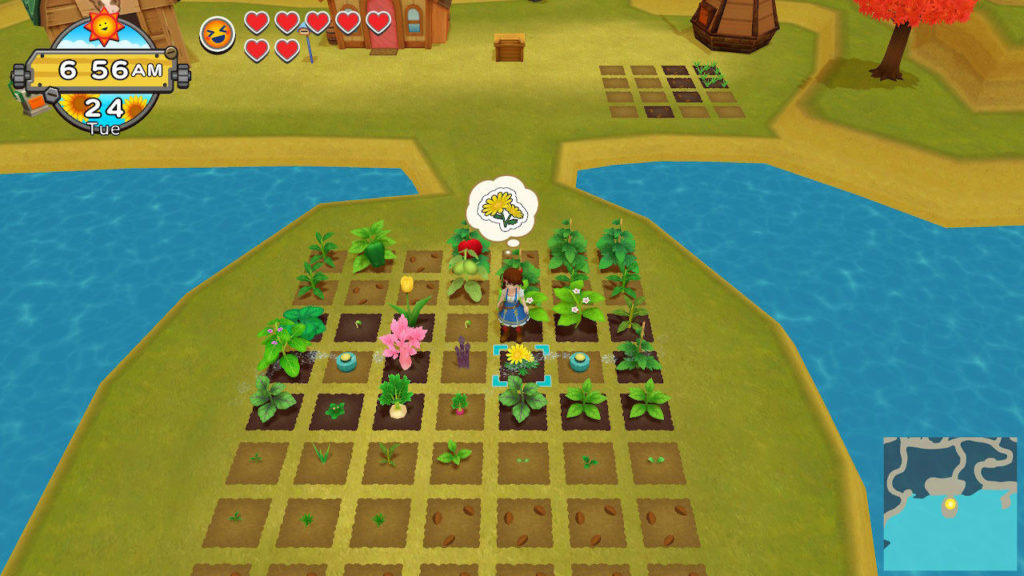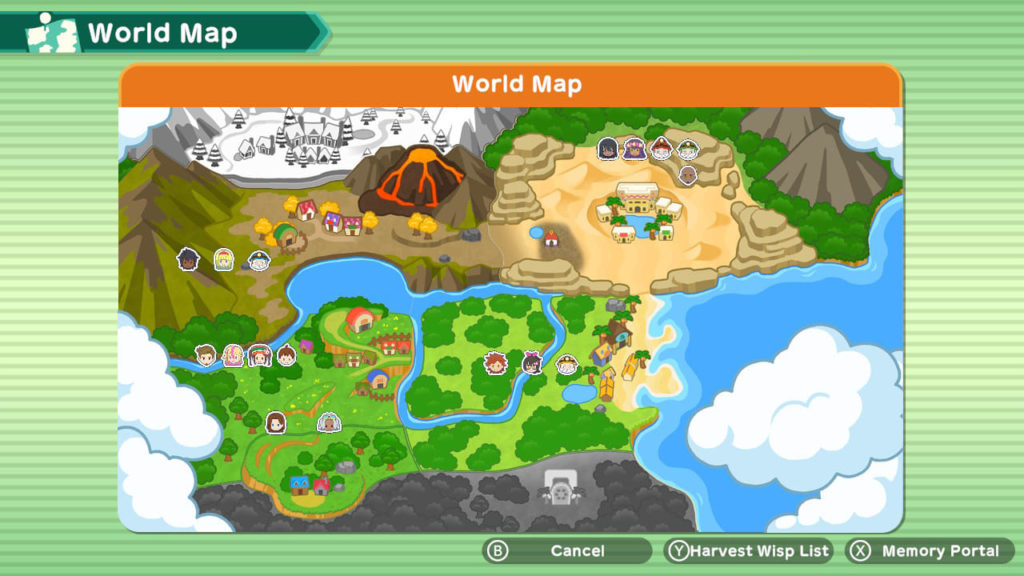I love farm games. So, I said it. Yes, I adore the work you have to do on a farm; I love to watch series like ‘Boer zoekt vrouw‘ (Farmer wants a wife) on television and all those kind of series. Maybe it’s because I grew up in a rich farm environment (not on an actual farm, but there were many nearby). So when a new Harvest Moon or new Story of Seasons (I’ll explain in a bit) comes along, I’m the one picking it up and plowing through. So without further ado, let’s harvest!
In this addition, you can trek across beaches, the desert, and even a volcano in the latest entry into the long-running Harvest Moon series! The Harvest Goddess has gone missing, and it’s up to you to help bring her back! Along the way, you’ll come across cows, sheep, camels, and even reindeer! Dig in because, in this game, the world is literally your oyster!
Alright, before digging further into that oyster, I need to explain something. This is not the same series that I played when I was younger on GameBoy Advance or the Nintendo GameCube. Yes, it’s still the same name, and it features some of the core concepts – but – the most accurate games from that era are the Story of Seasons games. Why do you ask? Well, young whippersnapper, let me tell you a story.
These games are being produced by two different companies: Natsume and Marvelous AQL.
If you have ever played a Harvest Moon game before, both of these names should look familiar. Natsume and Marvelous are responsible for Harvest Moon as we know it here in the west, with Marvelous being the series developer and Natsume being responsible for western localization. In an E3 2014 interview with Marvelous’ head of development, Yoshifumi Hashimoto, it was stated that both Marvelous and Natsume had different visions for the future of the series. For this reason, the companies decided to split from their collaborative work to each pursue their own path. Natsume went on to create Harvest Moon: The Lost Valley while Marvelous is responsible for Story of Seasons, which will be localized for western audiences by XSEED Games.
Harvest Moon usually harkens back to its roots with a simple story. Players must find out why X is happening while their new homes are messed up and save the valley by finding a way to fix it, all while maintaining their own farm. Story of Seasons chooses to take and run with the other element their series has always been known for: connections. In past games, half of the battle was to make friends with townsfolk and Harvest Sprites to solve the mysteries of life, the universe, and farming. Getting married to the bachelor or bachelorette of your choice was integral to the game’s experience as a whole.
Harvest Moon: One World
Alright, up to speed? Before the Harvest Goddess disappeared from this world, she imbued the tiny Harvest Wisps with the knowledge of various seeds, thus ensuring the world’s various fruits and vegetables would not be lost. Using the power given to these Harvest Wisps, you’ll unlock various seeds as you progress through the game! But the Harvest Wisps can be tricky to find, as they all appear at different times and places. You’ll need to use your noggin to make sure to seek as many as you can of them out!
Or at least that’s what the game tells you. Luckily the game provides you with a nifty tool that you can use to track these Harvest Wisps you need. This makes collecting certain seeds a lot easier, and most of them are offered in abundance. While Harvest Moon starts like Pokémon, with you and mom (where’s dad?) and a nutty professor all packed together, you soon move out into the big world. And do you have to build a new farm every time? No! Enter the Expando-Farm, which is basically a pop-up version of your farm (without the land), which fits in your pocket. Now available for only 20 easy payments of 99,99 (Just kidding, don’t worry).
Each area offers a set amount of quests, side-quests, and new relationship options for you to explore. The emphasis in Story of Seasons is on the wedding stuff. Harvest Moon feels like an RPG-lite, in which you unlock more options that work towards unlocking the Harvest Goddess. It’s a nice change of pace since you get to do something every day, next to farming and watering. There are a total of five unique and colorful areas to explore, each with its own flora and fauna. You start in the sprawling grasslands of Calisson but soon unlock the gorgeous beaches of Halo-Halo, the searing desert heat of Pastilla, the cozy hills of Lebkuchen, and the snowy mountains of Salmiakki!
Walking Sim?
My main problem with this set is the amount of walking you have to do. It’s a lot – and consumes a lot of stamina. So either eat all your food and sell nothing or sell all your food and plan accordingly on what you’re going to do that day. It made my progression through the game a lot slower (even though it’s a farming game, and farming takes time). Combine this with some frame drops/shudderings along the way, and the whole feeling suddenly feels a lot less dreamy.
Conclusion:
Still, the noted feedback is nothing of the game-breaking issue, and Harvest Moon: One World is a very time-consuming game. It makes you coming back for more, to tend to your cows or pigs one more time – or to delve a little deeper into the mine. However, with the added RPG elements, the core concepts change and shave off a little of the magic I once felt while playing the ‘old’ Harvest Moon games. It delivers a new look on farming simulation and seeks out those who want to play something else than Stardew Valley or Animal Crossing but think Sakura Rice or Rain is too hardcore. Well, don’t look any further; Harvest Moon is there to save the day.





